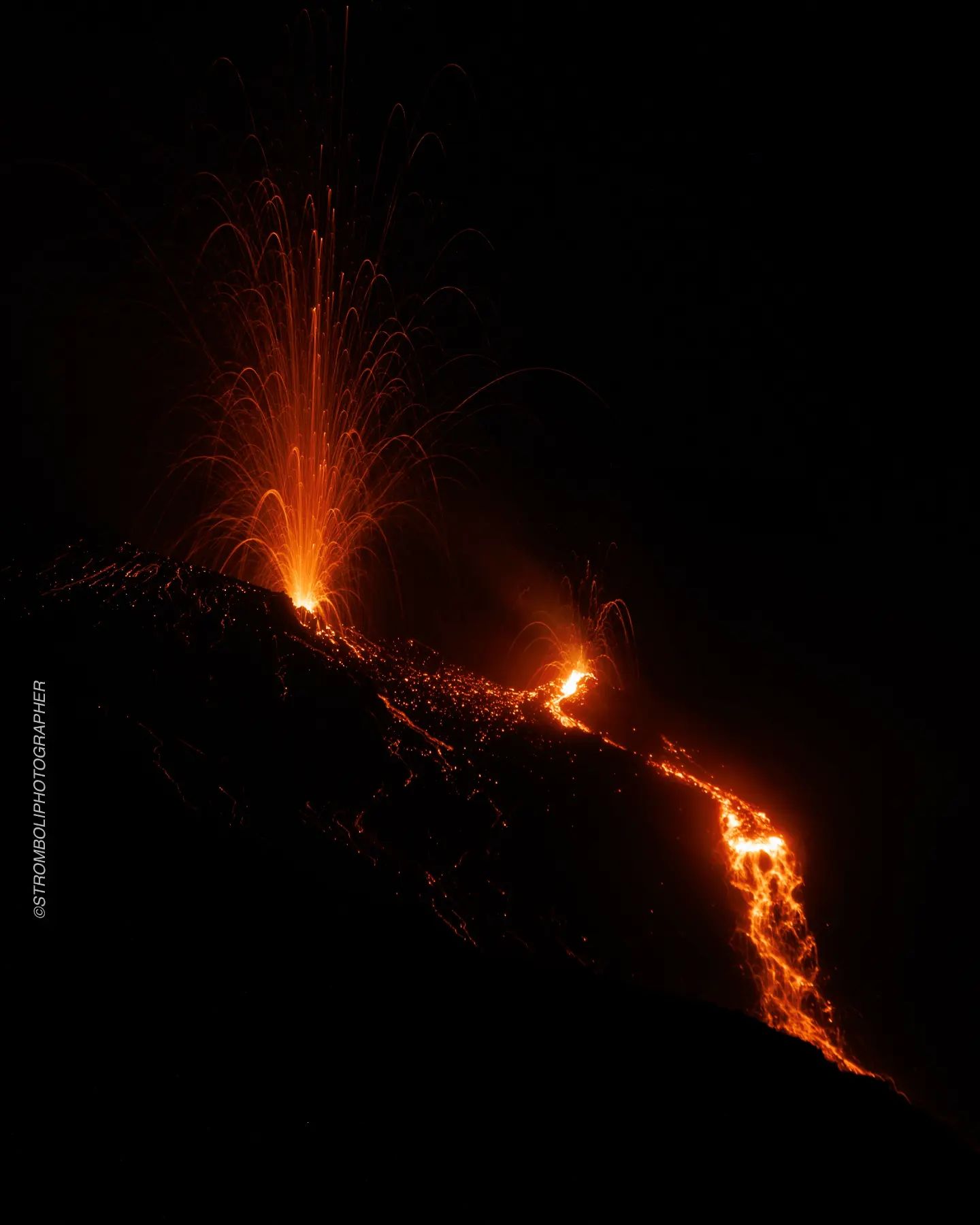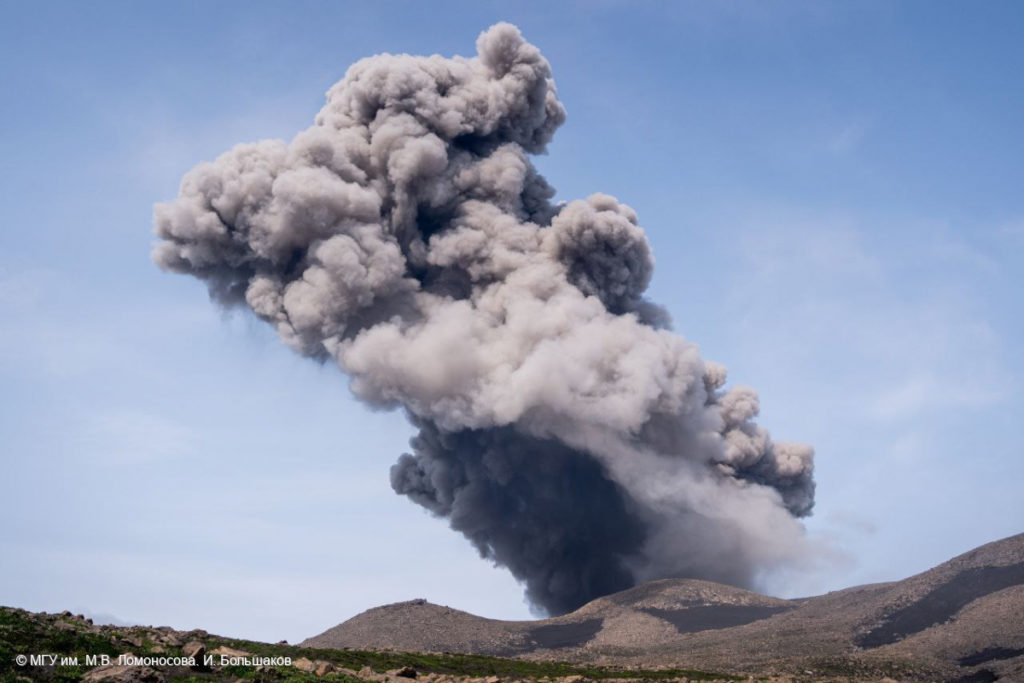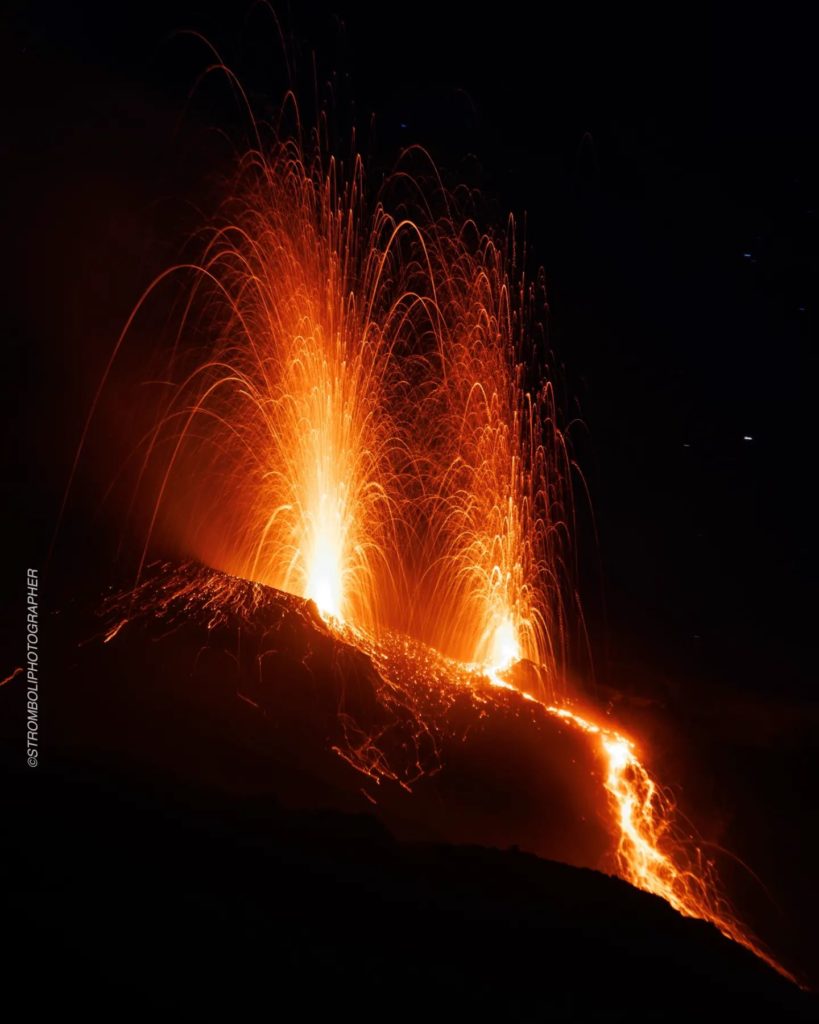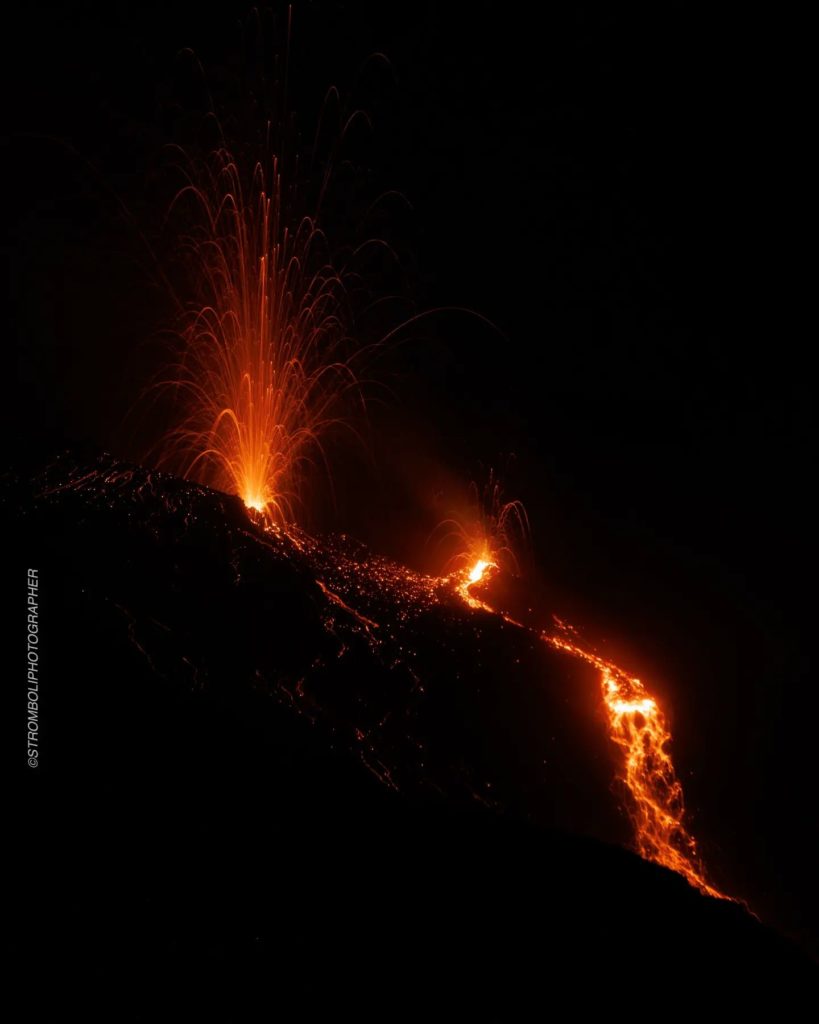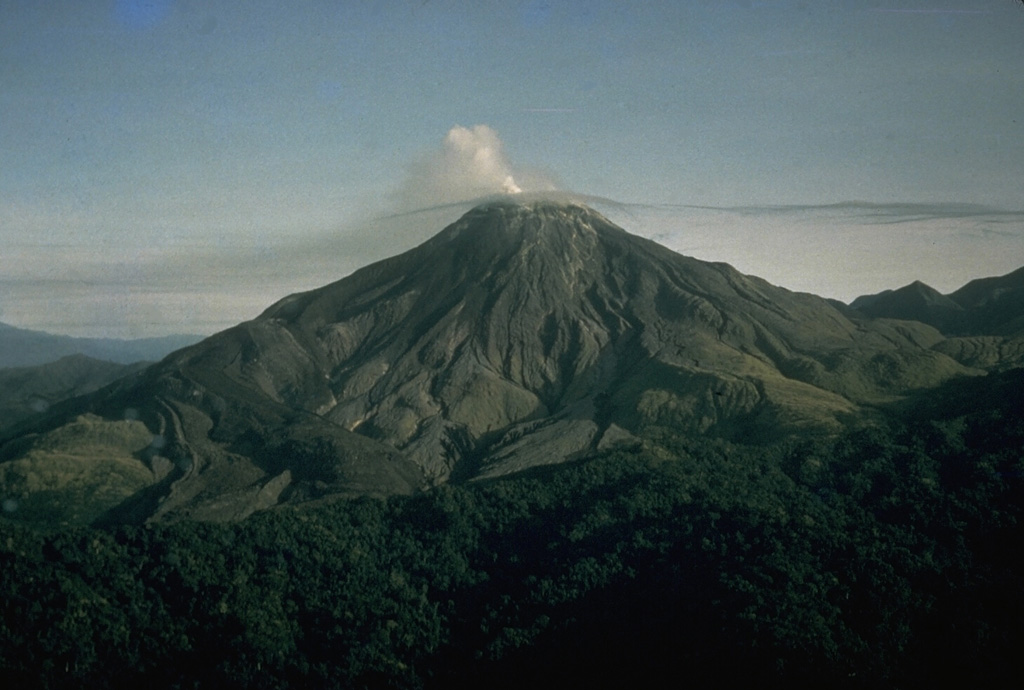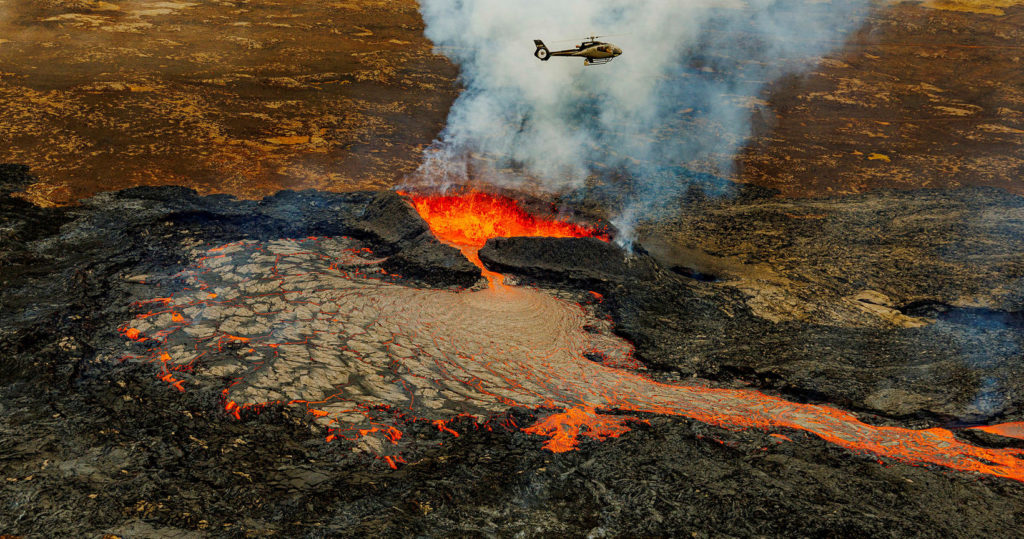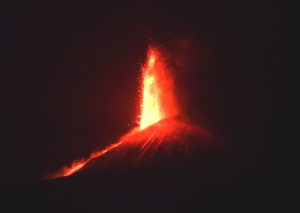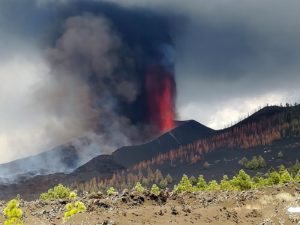August 03 , 2023.
Russia / Kuril Islands , Ebeko :
VOLCANO OBSERVATORY NOTICE FOR AVIATION (VONA)
Issued: July 03 , 2023
Volcano: Ebeko (CAVW #290380)
Current aviation colour code: ORANGE
Previous aviation colour code: orange
Source: KVERT
Notice Number: 2023-89
Volcano Location: N 50 deg 41 min E 156 deg 0 min
Area: Northern Kuriles, Russia
Summit Elevation: 1156 m (3791.68 ft)
Volcanic Activity Summary:
A moderate explosive activity of the volcano continues. According to visual data from Severo-Kurilsk, explosions sent ash up to 3.5 km a.s.l., an ash cloud is drifting to the south-east of the volcano.
A moderate eruptive activity of the volcano continues. Ash explosions up to 6 km (19,700 ft) a.s.l. could occur at any time. Ongoing activity could affect low-flying aircraft and airport of Severo-Kurilsk.
Volcanic cloud height:
3000-3500 m (9840-11480 ft) AMSL Time and method of ash plume/cloud height determination: 20230803/0148Z – Visual data
Other volcanic cloud information:
Distance of ash plume/cloud of the volcano: 10 km (6 mi)
Direction of drift of ash plume/cloud of the volcano: SE
Time and method of ash plume/cloud determination: 20230803/0148Z – Visual data
Start time of explosion and how determined: 20230803/0148Z – Visual data
Source : Kvert
Photo : I. Bolshakov. M.V. Lomonosov MGU
Italy , Stromboli :
Statement on Stromboli activity, 02 August 2023, 17:18 (15:18 UTC).
The National Institute of Geophysics and Volcanology, Osservatorio Etneo, communicates that from about 12:30 UTC, the intensification of explosive activity (projections) from the area of the North crater, produced an overflow of the ejected material which is channeled and accumulated in the upper part of the Sciara del Fuoco. The phenomenon was observed by surveillance cameras and is still ongoing at the time of this press release.
From the seismic point of view, the average amplitude of the volcanic tremor is, currently, in the medium-low level.
There are no significant changes in the rate of occurrence and in the amplitude of the explosion tremors.
No significant variation was found in the ground deformation data.
Statement on Stromboli activity, August 03, 2023, 09:31 (07:31 UTC).
The National Institute of Geophysics and Volcanology, Osservatorio Etneo, communicates that from the analysis of the images of the surveillance cameras, it has been observed that during the night and in the early hours of the morning, the splashes of the North zone from the crater are gradually decreasing in intensity and, therefore, the flow described in the previous press release has regressed and is currently cooling. Ordinary Strombolian activity continues in both the North and Center-South crater zones.
From the seismic point of view, the average amplitude of the volcanic tremor is, currently, in the average level. There are no significant variations in the rate of occurrence and in the amplitude of the blast quakes.
The signals from the soil deformation monitoring networks do not show any significant variations.
Further updates will be communicated soon.
WEEKLY BULLETIN, from July 24, 2023 to July 30, 2023, (issue date August 01, 2023)
ACTIVITY STATUS SUMMARY
In the light of the monitoring data, it is highlighted:
1) VOLCANOLOGICAL OBSERVATIONS: During this period, normal Strombolian activity was observed with weak spattering activity in the North Crater area. The total hourly frequency of explosive events fluctuated within average values (10-15 events/h). The intensity of the explosions varied from low to high in both the North and Center-South crater zones.
2) SEISMOLOGY: The seismological parameters monitored do not show any significant variations. 2 earthquakes with a local magnitude greater than 1.0 were recorded.
3) GROUND DEFORMATIONS: The ground deformation monitoring networks did not show any significant variations.
4) GEOCHEMISTRY: The flow of SO2 is placed at an average level
The CO2 flow in the Pizzo area shows average values.
The C/S ratio in the plume shows average values.
There are no updates on the isotope ratio of dissolved helium in groundwater
5) SATELLITE OBSERVATIONS: Thermal activity observed from satellites was generally weak.
Observations of explosive activity captured by surveillance cameras.
In the area of the North crater (N), with two vents located in the N1 sector and one in the N2 sector, an explosive activity of intensity varying from low (less than 80 m in height) to high (greater than 150 m in height). height) was observed. The eruptive products consisted mainly of coarse materials (bombs and lapilli), sometimes mixed with fine materials (ash). In addition, modest spattering activity was observed at both the N1 sector and the N2 sector. The average frequency of explosions varied from 5 to 10 events/h.
In the Center-South zone (CS), sector S1 showed a weak emission of gas under pressure while sector C, sporadically, showed low intensity explosive activity with emission of coarse materials. Sector S2, with three active vents, mainly showed explosive activity of varying intensity from low to high with the emission of coarse materials sometimes mixed with fine materials. The average frequency of explosions varied from 4 to 9 events/h.
Source : INGV.
Photos : Stromboli stati d’animo/ Sebastiano Cannavo.
La Réunion , Piton de la Fournaise :
Press release from the Paris Institute of Earth Physics, Piton de la Fournaise Volcanological Observatory, August 03, 2023 – 09:30 – 05:30 UTC.
Ongoing eruption
The eruption which began on July 02, 2023, around 08:30 local time continues. The amplitude of the volcanic tremor (indicator of an emission of lava and gas on the surface) remains very low compared to the start of the eruption and is relatively stable over the last 24 hours.
Given the poor weather conditions currently on site, no estimate of the lava flows by satellite method could be made over the last 24 hours; on the other hand, clearings early this morning allowed a visual feedback on the eruptive cone at 1720 m altitude and on the active lava field in the Grandes Pentes.
The activity continues with weak projections of lava at the level of the eruptive cone and the active lava flows – fed by resurgences from the lava tunnels – were located this morning – at 4 a.m. local time – at distances between 1200 and 2000 m from the eruptive cone, i.e. up to a minimum altitude of 1000-1100 m.
Low inflation of the summit area has been recorded since mid-July, indicating a re-pressurization of the volcano’s feeding system centered under the summit area with possible transfer of deep magma to the latter, then feeding the eruption.
The seismic activity recorded under the summit zone remains weak. Thus over the last 24 hours, six superficial volcano-tectonic earthquakes have been recorded. This low seismic activity leads to a reduction in the risk of the appearance of a new crack and/or collapse in the crater, but does not mean that it can be excluded, as shown by the continuation of the summit inflation and the fluctuations in the amplitude of the tremor which are regularly observed.
Alert level: Alert 2-1 (eruption in the Enclos without any particular threat to the safety of people, property or the environment)
Source : OVPF.
Photo : Imaz press / Brandon production.
Papua – New Guinea , Bagana :
RVO reported that the eruption at Bagana continued during 18-29 July. Intermittent ash emissions drifted NNW, NW, and SW. On 26 July fine ashfall was reported on the coast of Torokina (20 km SW). The ash also drifted toward Laruma (25 km W) and Atsilima (27 km NW). During the night of 28 July a small explosive eruption at 21h30 ejected lava fragments from the crater vents, according to reports from Torokina. A lava flow with two lobes was also reported. A second explosion occurred at 21h57. Incandescence from the lava flow was observed from Piva as it descended the W flank around 20h00 on 29 July. The Alert Level remained at 2 (on a four-level scale).
Bagana volcano, occupying a remote portion of central Bougainville Island, is one of Melanesia’s youngest and most active volcanoes. This massive symmetrical cone was largely constructed by an accumulation of viscous andesitic lava flows. The entire edifice could have been constructed in about 300 years at its present rate of lava production. Eruptive activity is frequent and characterized by non-explosive effusion of viscous lava that maintains a small lava dome in the summit crater, although explosive activity occasionally producing pyroclastic flows also occurs. Lava flows form dramatic, freshly preserved tongue-shaped lobes up to 50 m thick with prominent levees that descend the flanks on all sides
Sources : Rabaul Volcano Observatory (RVO) , GVP.
Photo : CD. Branch, 1964 (avec l’aimable autorisation de Ben Talai, Observatoire du volcan Rabaul).
Iceland , Litli Hrútur :
August 1, 2023
Lava flow measurements
Afternoon Yesterday, July 31, an aerial photography flight was conducted over the lava flow at Litli-Hrútur.
The images were obtained from TF-CAD around 17 yesterday. The Institute of Natural Sciences made a terrain model from the photos. Measurements show that the average lava flow over the past eight days (July 23-31) was about 5.0 m3/s.
The lava had reached 1.5 square kilometers and its volume was 15.9 million cubic meters. Lava expansion last week was not large, but mostly eastward, and the rim advanced 200-300m to Meradalir. The current eruption has grown a bit larger than the one that occurred in August last year, but compared to the 2021 eruption, this lava is still just over 10% of that which was issued at the time.
Measurements confirm that the lava flow is constantly decreasing, and given that the average flow applies over an eight-day period, it can be calculated that it is, at the time of writing, only 3 -4 m 3 /s.
Chemical composition measurements
Four-day samples in addition to previous measurements were chemically analyzed. There have been no significant changes in the chemical composition of the lava since the eruption began at Litli-Hrútur on July 10. The nature of the lava is very similar to that of the eruption that took place at Meradalir last year, but is different from that which took place during the first months of 2021 at Geldingadalur.
The decrease in the flow of homogeneous magma, as is currently the case at Litli-Hrútur, is explained by the emptying of an isolated magma reservoir which is not recharged by the magma of the mantle. Therefore, this year’s eruption is very different from the 2021 eruption when magma flowed directly from the mantle to the surface and magma production increased as the eruption progressed. These results may therefore indicate that the end of the eruption is near.
Source : jardvis.hi.is/
Photo : mbl.is/Árni Sæberg

